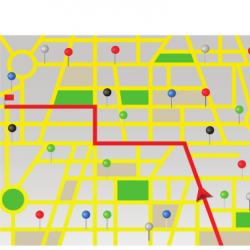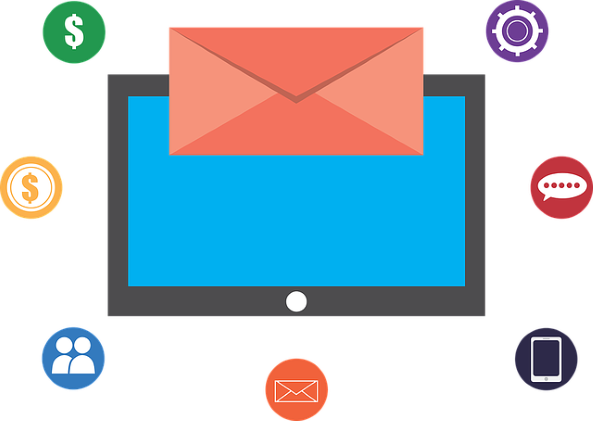Build a Journey to Yes Using Marketing Automation

Technology creates paradoxes that are as upside down as Alice’s adventures in Wonderland. Aimee Pagano’s recent 30 on Thursday webinar, Survival Kit for Building Your Buyer’s Journey, brought this message home. Machines are giving us the ability to understand and communicate with members more personally than ever before.
If you seek to deeply engage constituents (And, who doesn’t?), marketing automation software offers tools to lift those relationships to a new level. Aimee, who is senior digital marketing advisor at HighRoad Solution, gave an insightful overview on building successful member journeys. Automation is the genie that creates this trajectory, allowing you to deliver the perfect message with impeccable timing. Even if automation isn’t on your agenda yet, you can use Aimee’s advice to make campaign messaging razor sharp.
Set Strategy
Crafting a successful campaign, using automation, is a bit like being a travel agent and planning the perfect vacation for a new client. You start with broad assumptions. As your customer reacts to options, you are able to offer increasingly attractive choices. Each new interaction brings you closer to a sale — the next logical step in your relationship.
At the wide end of this funnel, your decisions will determine the overall campaign strategy. The goal might seem obvious. You want to grow the love—right? But it’s important to be specific. What are your current revenue and sales priorities? Do you need to:
- Recruit new members to broaden your base
- Retain current members and demonstrate value
- Upsell a special conference or new product
- Advocate for a position or change in your industry
Of course, you want to do it all. Why not wrap several of these activities in one package? Returning to the travel agent analogy—that’s like offering the Antarctic cruise, an African safari and a weekend in Paris in the same presentation. You risk confusion and your messaging may even be perceived negatively. Aimee recommends identifying a single goal and developing content specifically for that audience. Your tone and approach will vary depending on whether you are talking to seasoned members, new members, prospects or customers.

Map the Journey
Aimee identifies four components of every member journey.
Develop Personas
Who are your ideal members? Personas are the path to discovering those people. The goal is to create a character sketch of typical member types. Aimee compares this process to getting to know someone over a cup of coffee. You learn what makes them a good fit for your organization and how to engage their interest by exploring attributes such as:
- Demographics—Segmenting by age, location, socio-economic information
- Soft Skills—Considering personality traits, work styles, etc.
- Goals—Learning what they seek to accomplish
- Obstacles—Understanding what could prevent them from joining your organization
- Opportunities—Discovering where you can engage their interest
- Challenges—Identifying the problems they seek to solve
If you don’t have all day to spend chatting at Starbucks, there are tools to help you achieve this level of awareness about your constituents. Aimee suggests starting with an empathetic approach. Walk in your members’ shoes. Shadow a member on the job for a day. Be an active listener who pays attention to comments and complaints.
You can strengthen anecdotal information with research such as member needs surveys, white papers and case studies. Mine the invaluable data in your association management system. And, if you have the opportunity to conduct focus groups and one-on-one conversations, seize it. Don’t forget social media. LinkedIn pages can reveal interests and affiliations.
Hiring a consultant to help you create these profiles is another strategy. Aimee points out that staff may come to this exercise with opinions that are based on the members they interact with most frequently. An objective observer can help you avoid bias.

Create a Persona Matrix
You may discover that your organization has several personas. Enthusiastic Millennials seeking hands-on experiences, busy mid-career moms and dads with little time to spare and seasoned professionals nearing retirement may all be represented. How each of these audiences consumes content is another defining characteristic. Aimee advises that if this is the first buyer journey you’ve mapped, you may be more successful focusing on one persona. You could narrow your choices by looking at where your organization’s programming and content resources will generate the most revenue and engagement.
Develop Themes
Personas are the characters in your association’s story. Use the attributes you’ve identified to craft themes and narratives that are compelling for them. Aimee provided this example based on her profile as a professional marketer:
Attribute Topic
Soft Skills: visionary Top Trends in Digital Marketing
Goal: Honing expertise, staying current Digital Tricks and Tools
Opportunity: visibility with associations Listing of Upcoming Local Events
Challenge: Managing change aversion Change Management with Associations
Distribute Assets
Just as you target content to your persona’s attributes, the resources you offer should match the stage you’ve reached in your relationship. Aimee likens this process to dating.
- Awareness—This is the gateway to future interactions. You’ll offer helpful resources such as blogs, reports, eBooks or webinars. In exchange, you’ll ask for information that will allow the two of you to get to know each other better. Response forms should request data that will trigger your ability to provide increasingly relevant content. Questions could concern demographics, socio/economic information or professional interests.
- Consideration—Now you can create even more meaningful interactions using member specific content such as white papers, case studies, quizzes and You might also be able to identify people who aren’t a good fit for this campaign and trim them from the list.
- Decision—You’re ready to pop the question. Offering coupons, discount codes or free services, can help you get to yes.
Prepare to Launch
With the important questions answered, you’re set to put your software to the test. Following are the steps that bring it all together:
- Foundational—create forms and emails, develop criteria for campaign tracking and lead qualification
- Lead Magnet—create enticing content to capture leads, identify distribution channels and drop lead magnet content
- Workflow—upload other assets, make workflows active and test (more than once).
Identify What Spells Success

In a traditional campaign, you might rely on the number of clicks, opens and conversions to analyze results. Marketing automation provides a richer and more detailed picture at any point in time. From leads to engagement and conversations, you can, and should, track all your interactions with your audience across multiple channels. Email, social media, web and even paid advertising can be consolidated and reported on from one platform.
Building a successful campaign is a complex process. If you’re a seasoned marketer you’ve undoubtedly had experience managing the many steps without marketing automation. But it’s worthwhile to consider how much more power, insight and efficiency you could gain from a technological assist.
